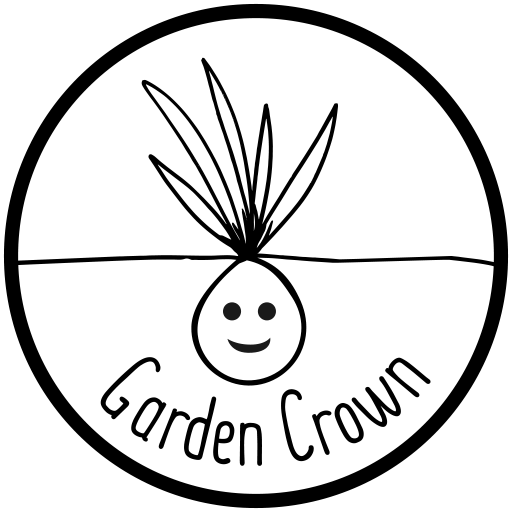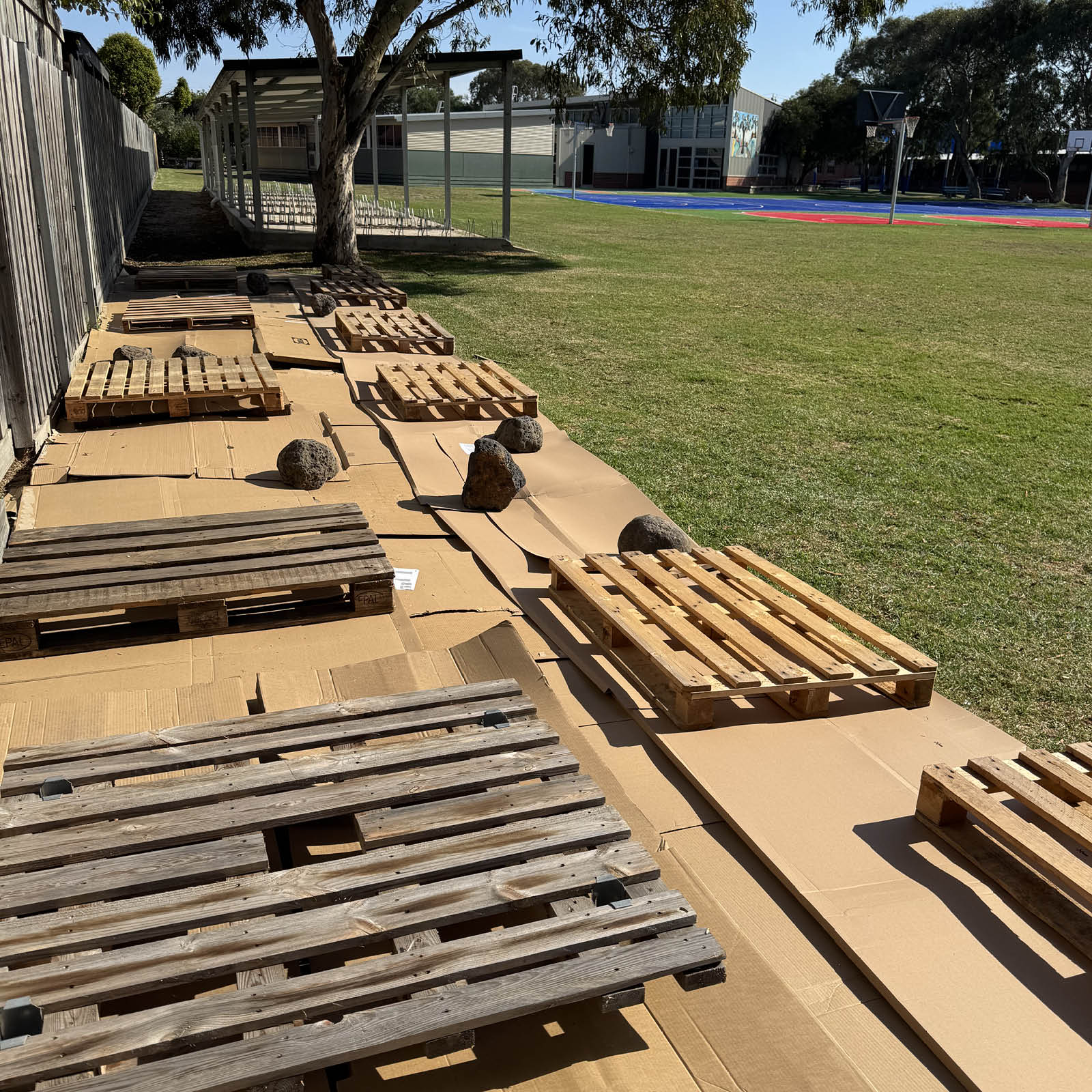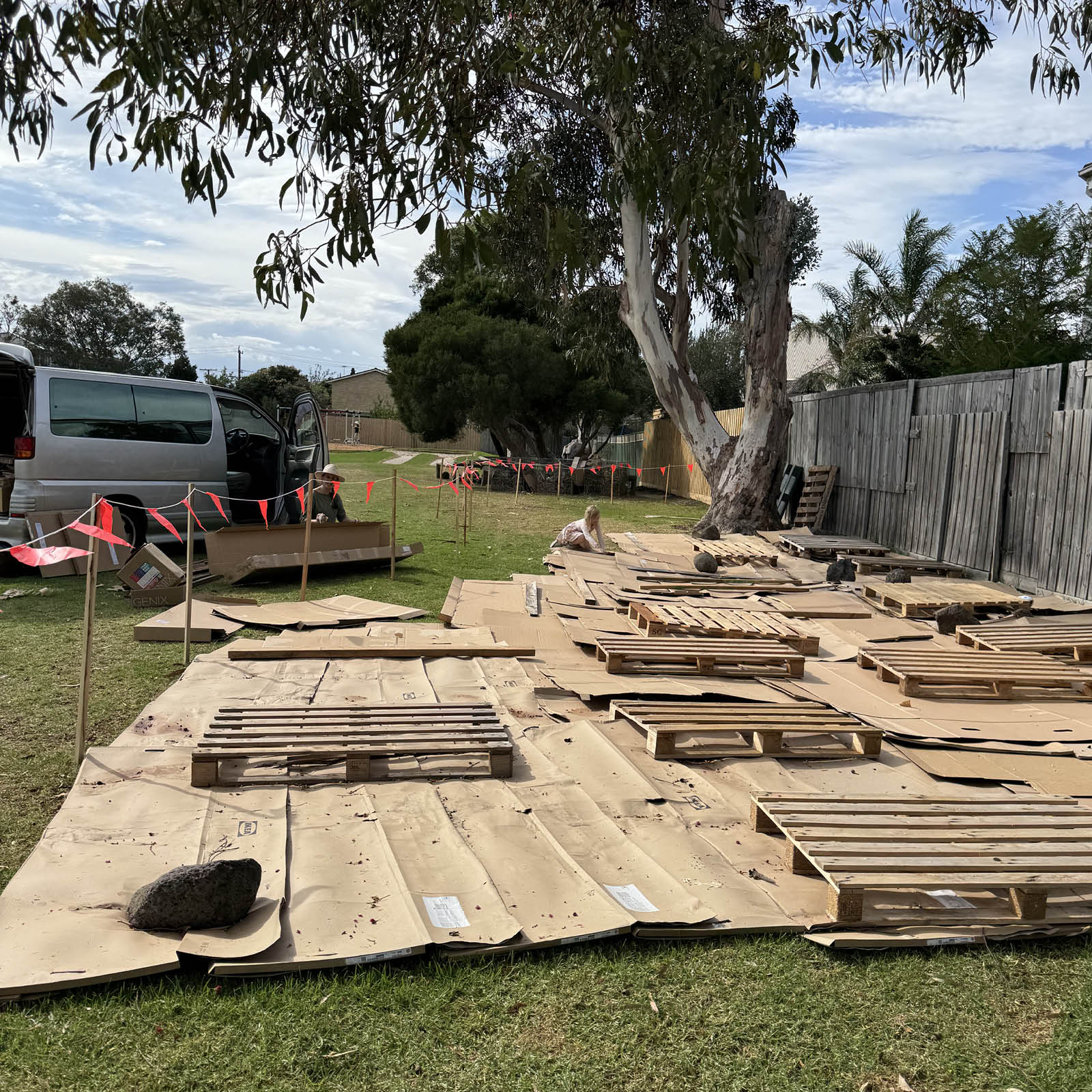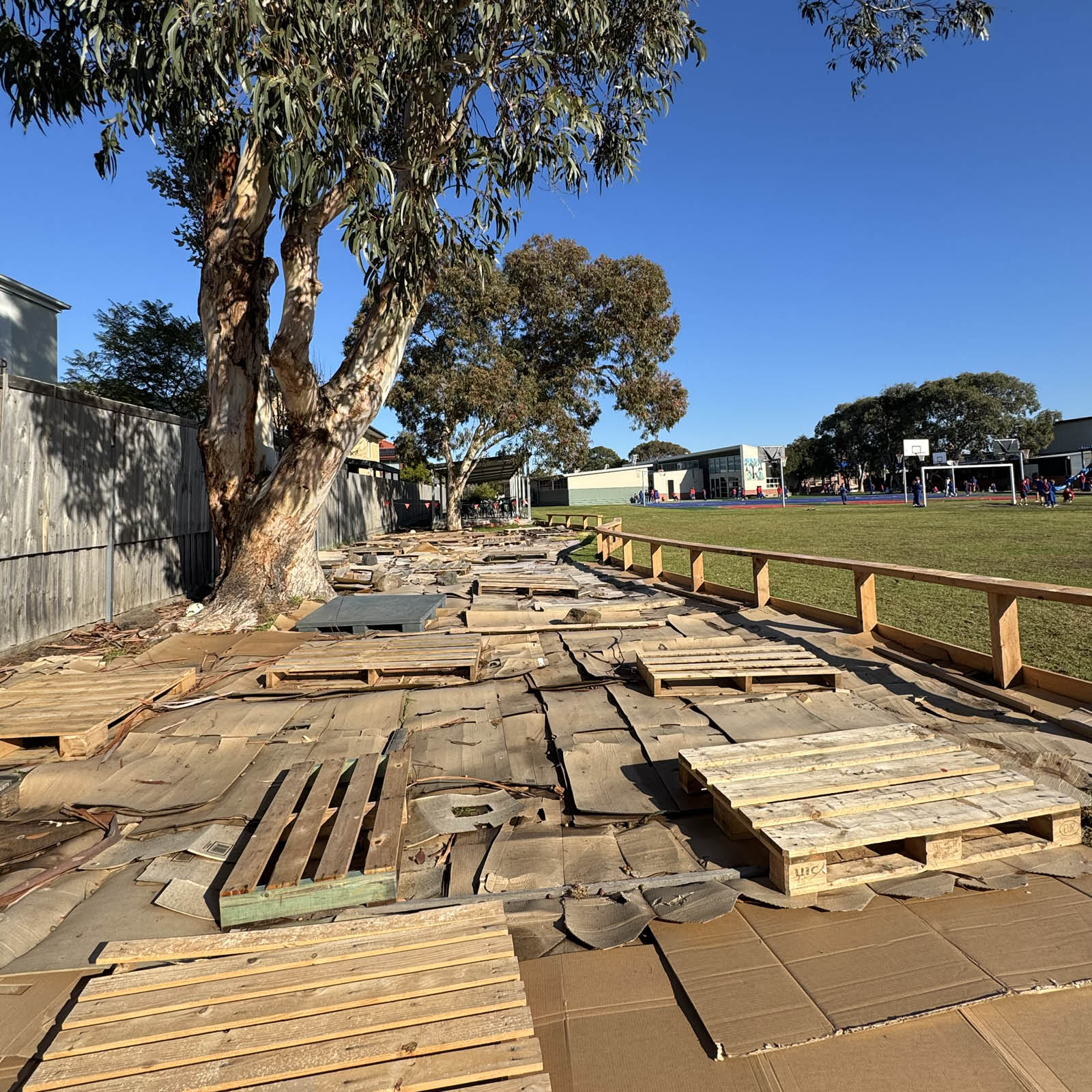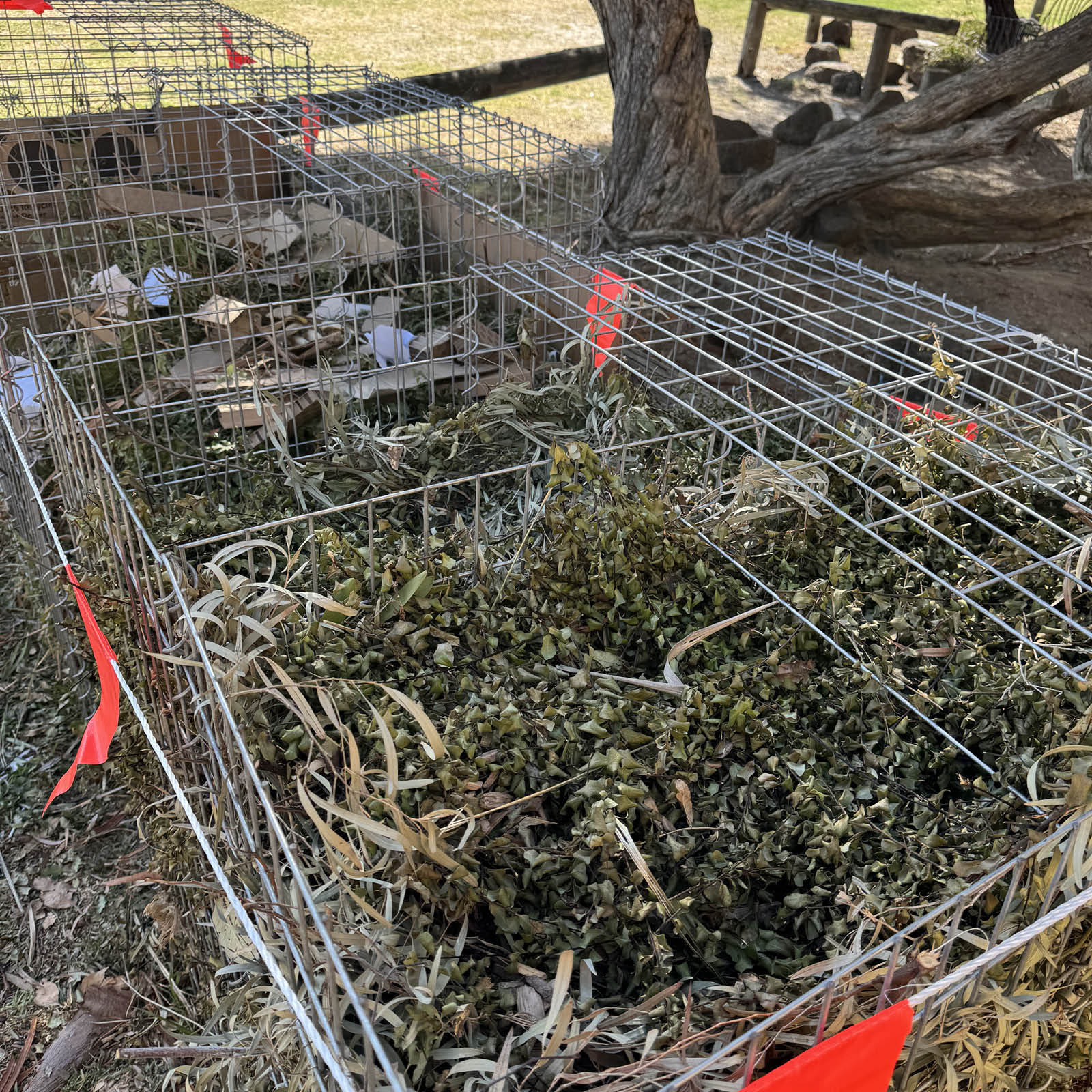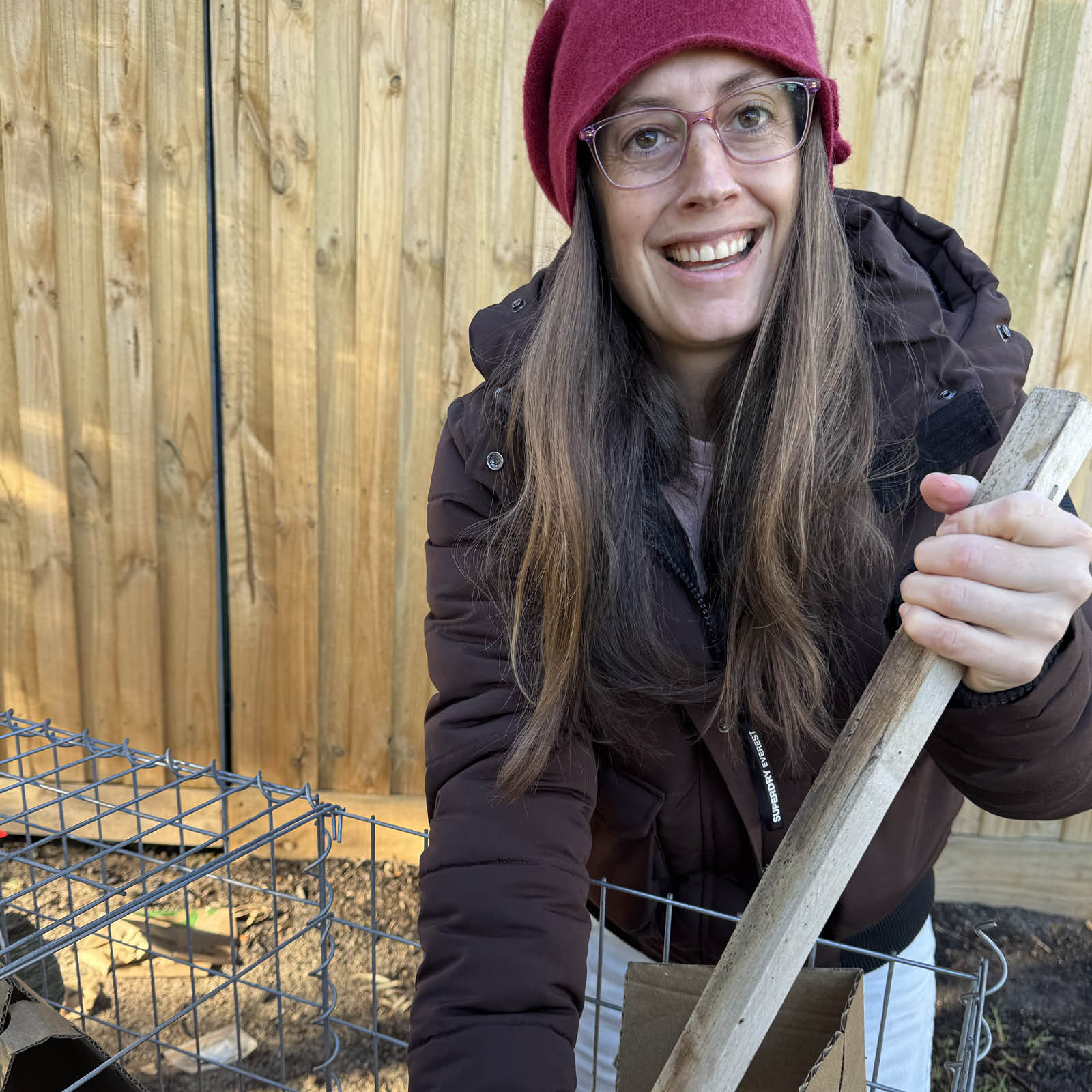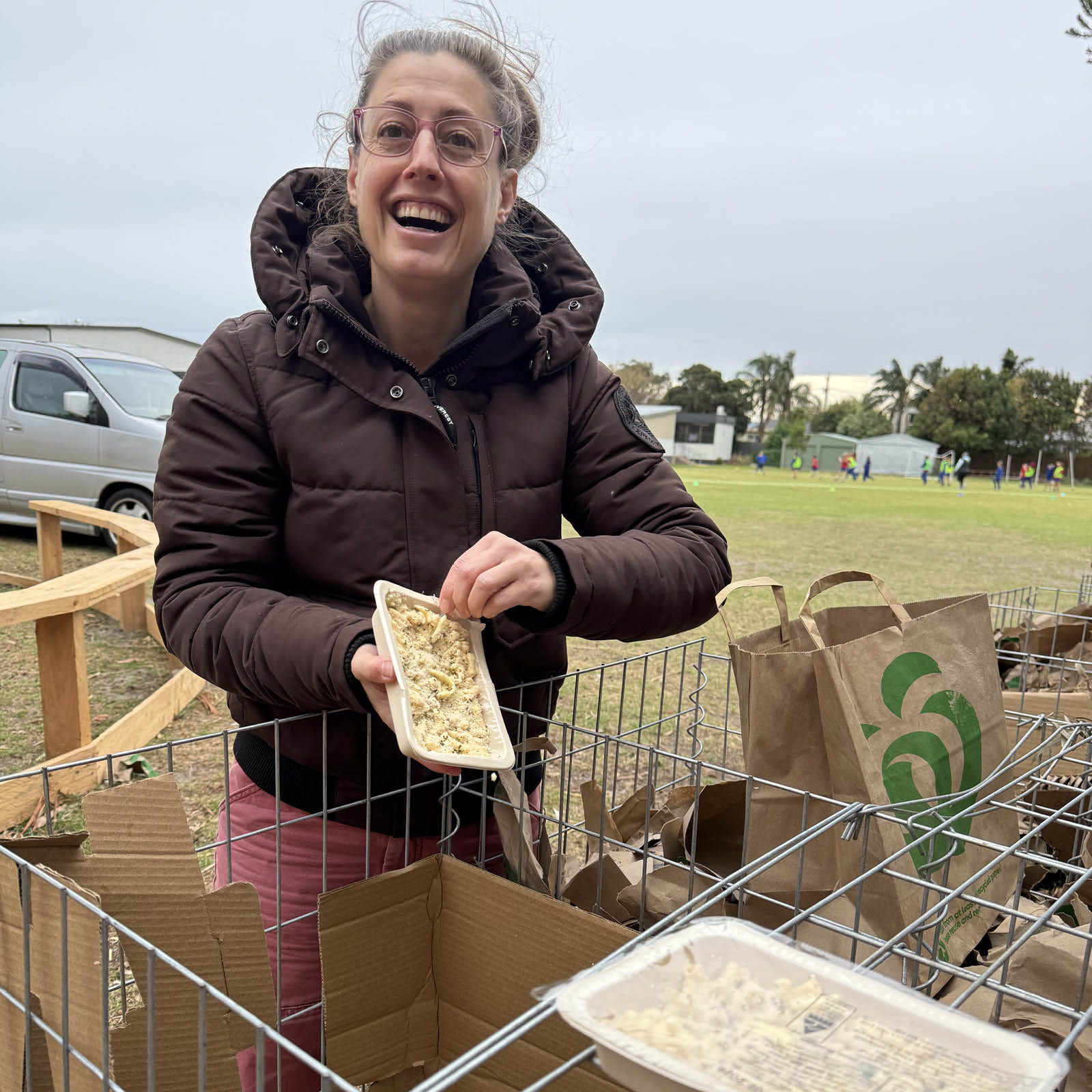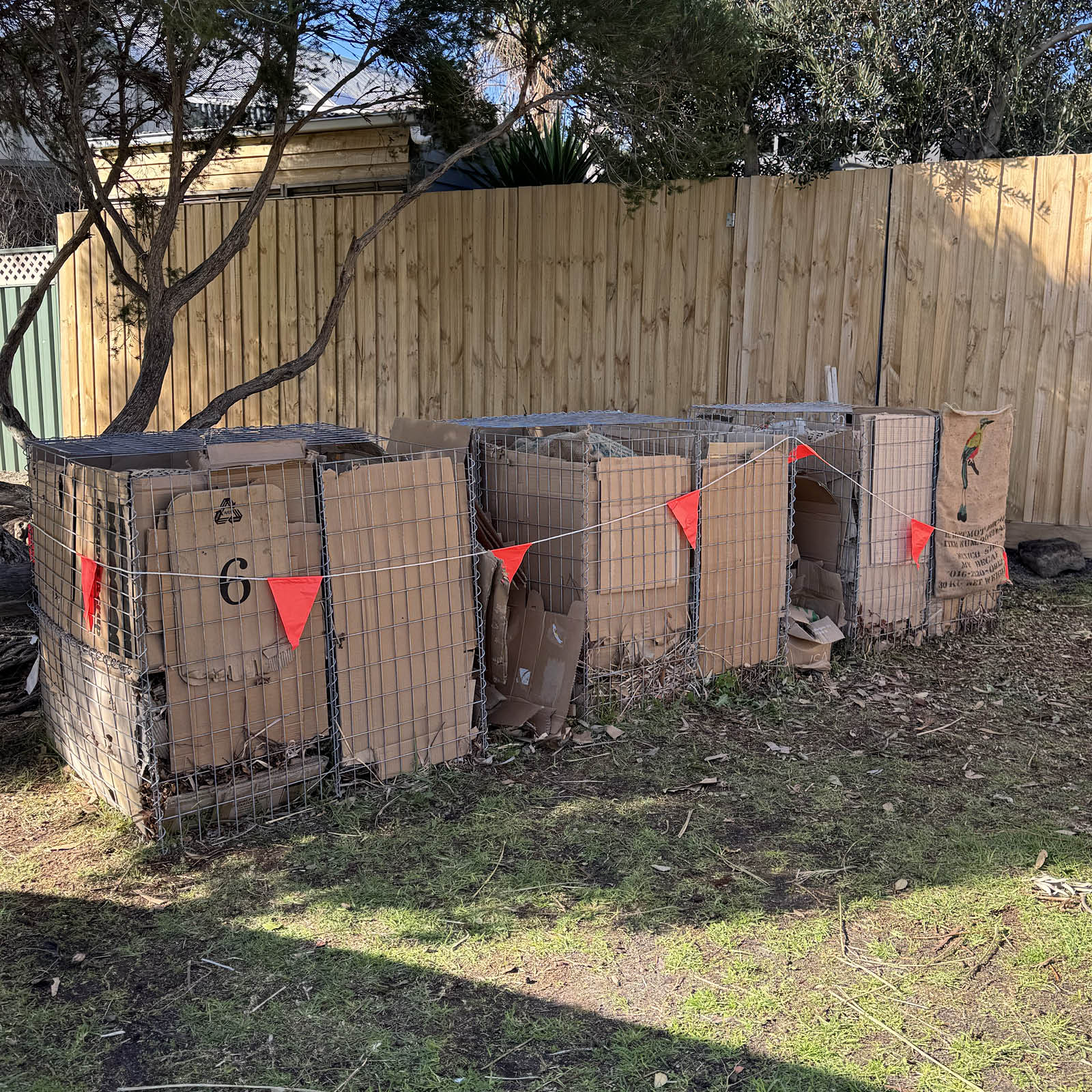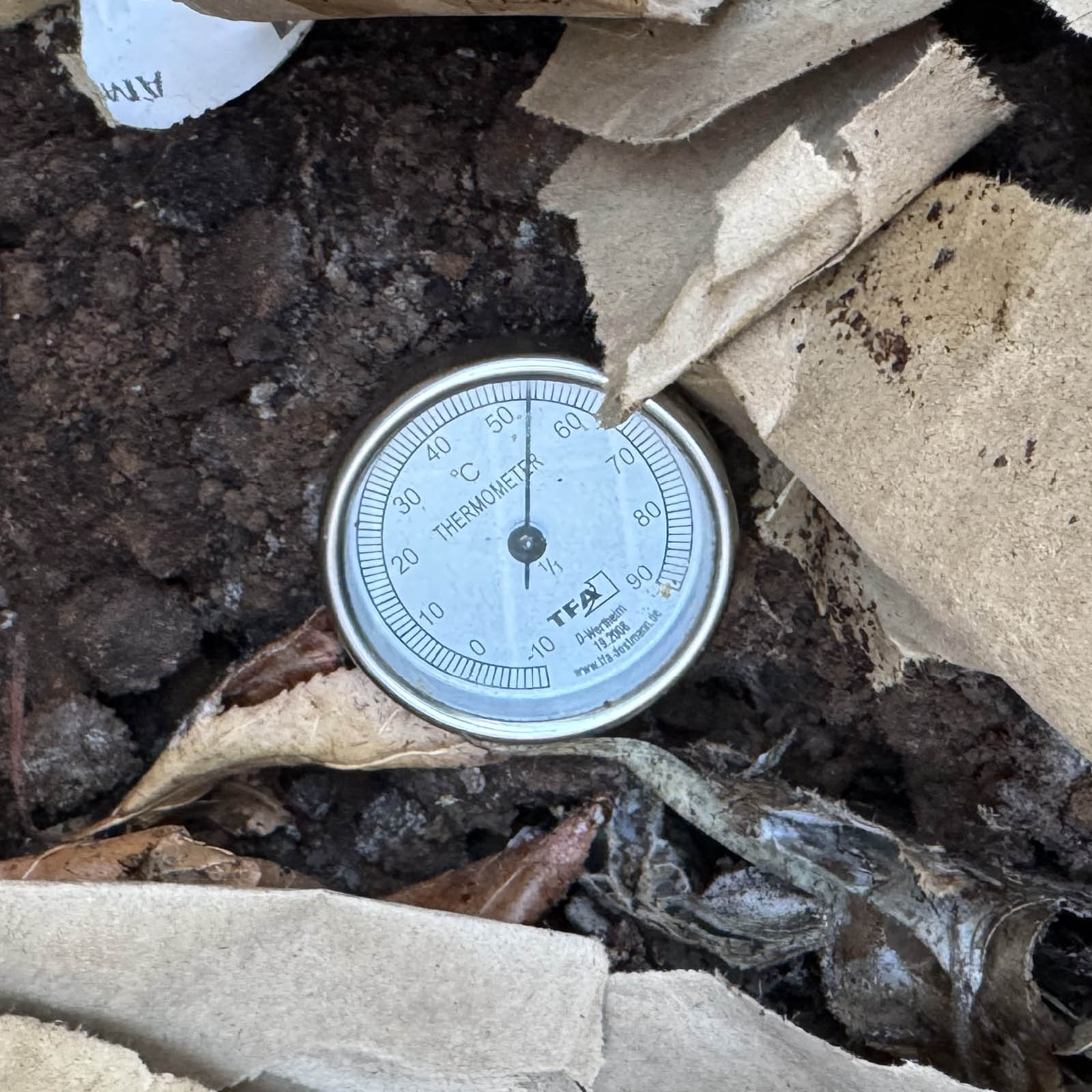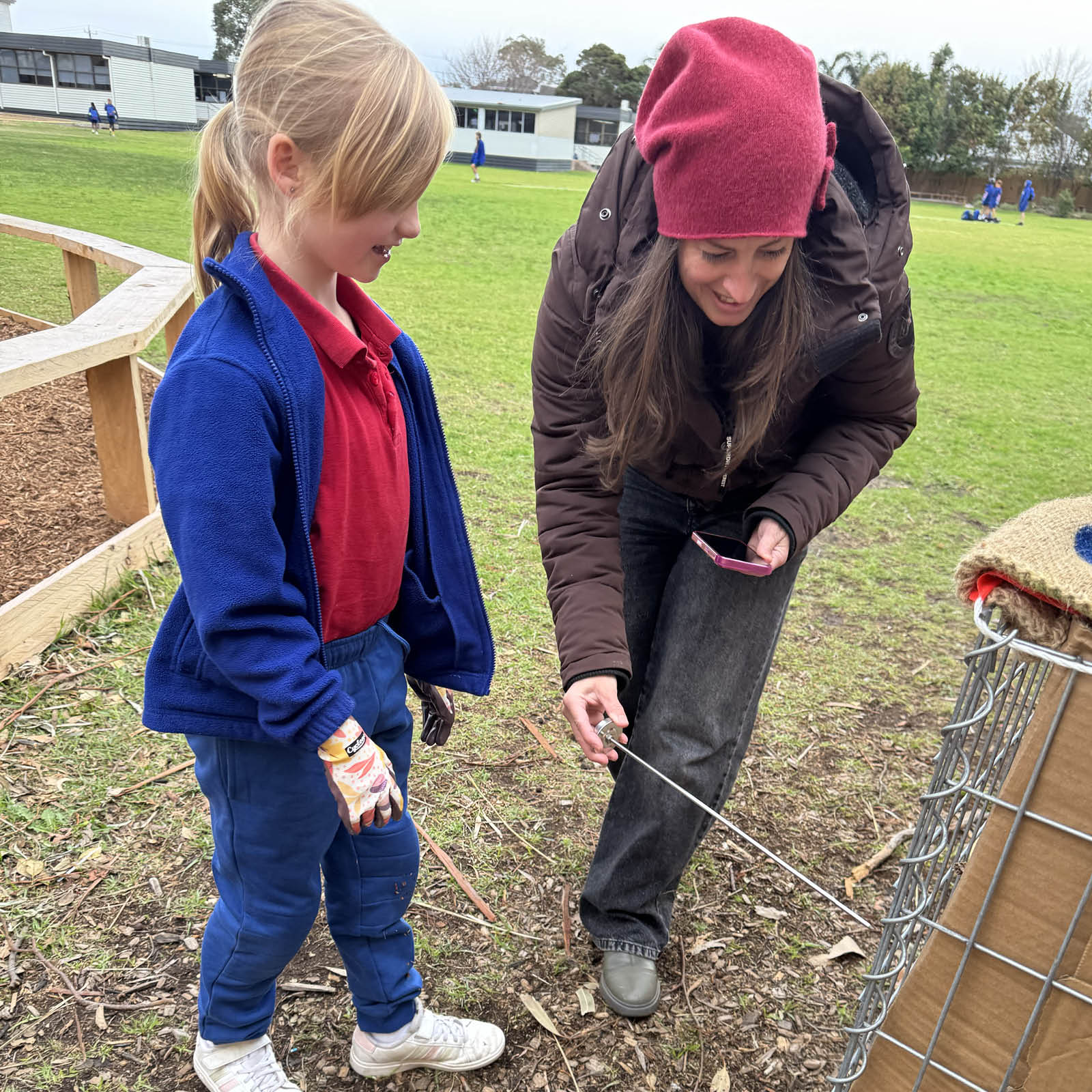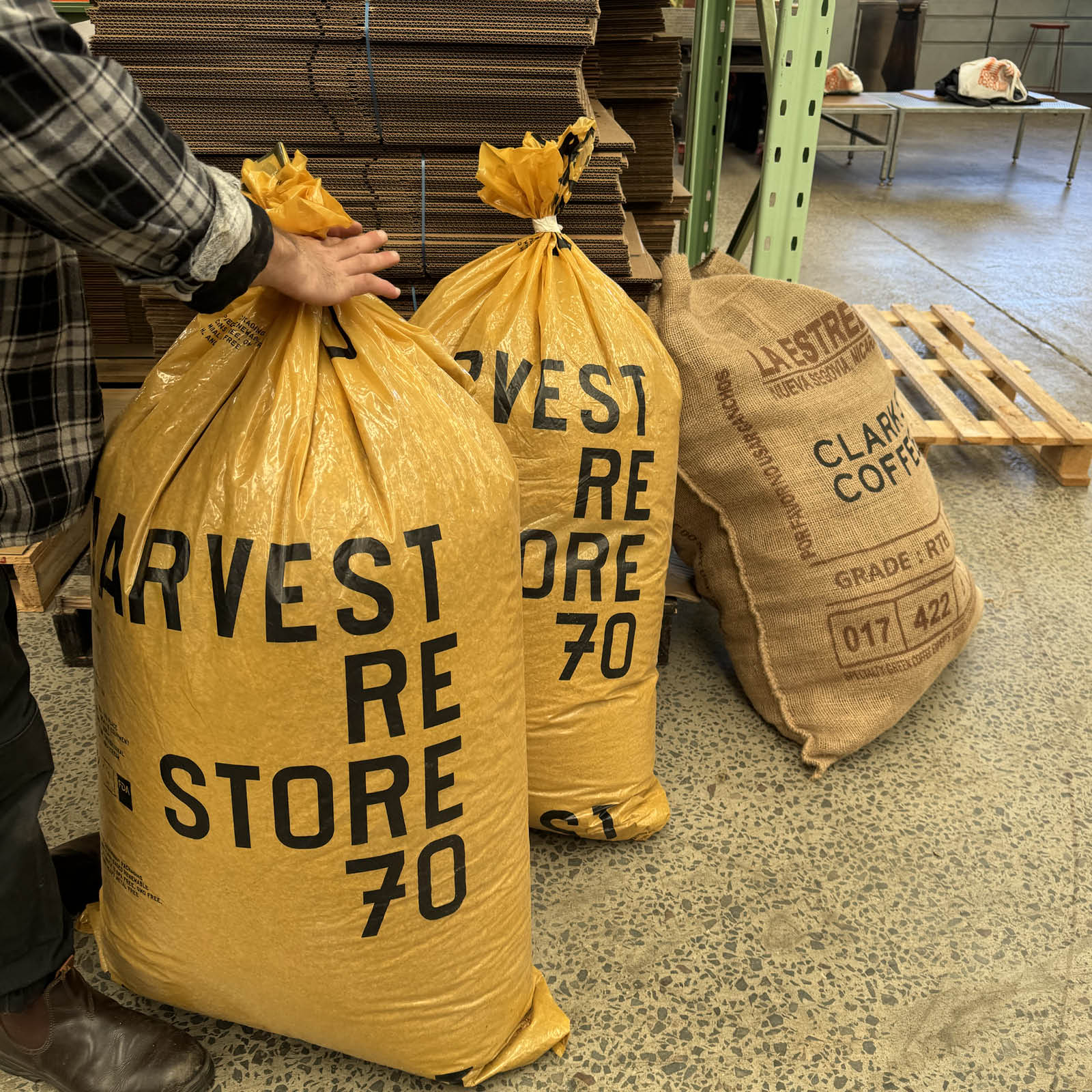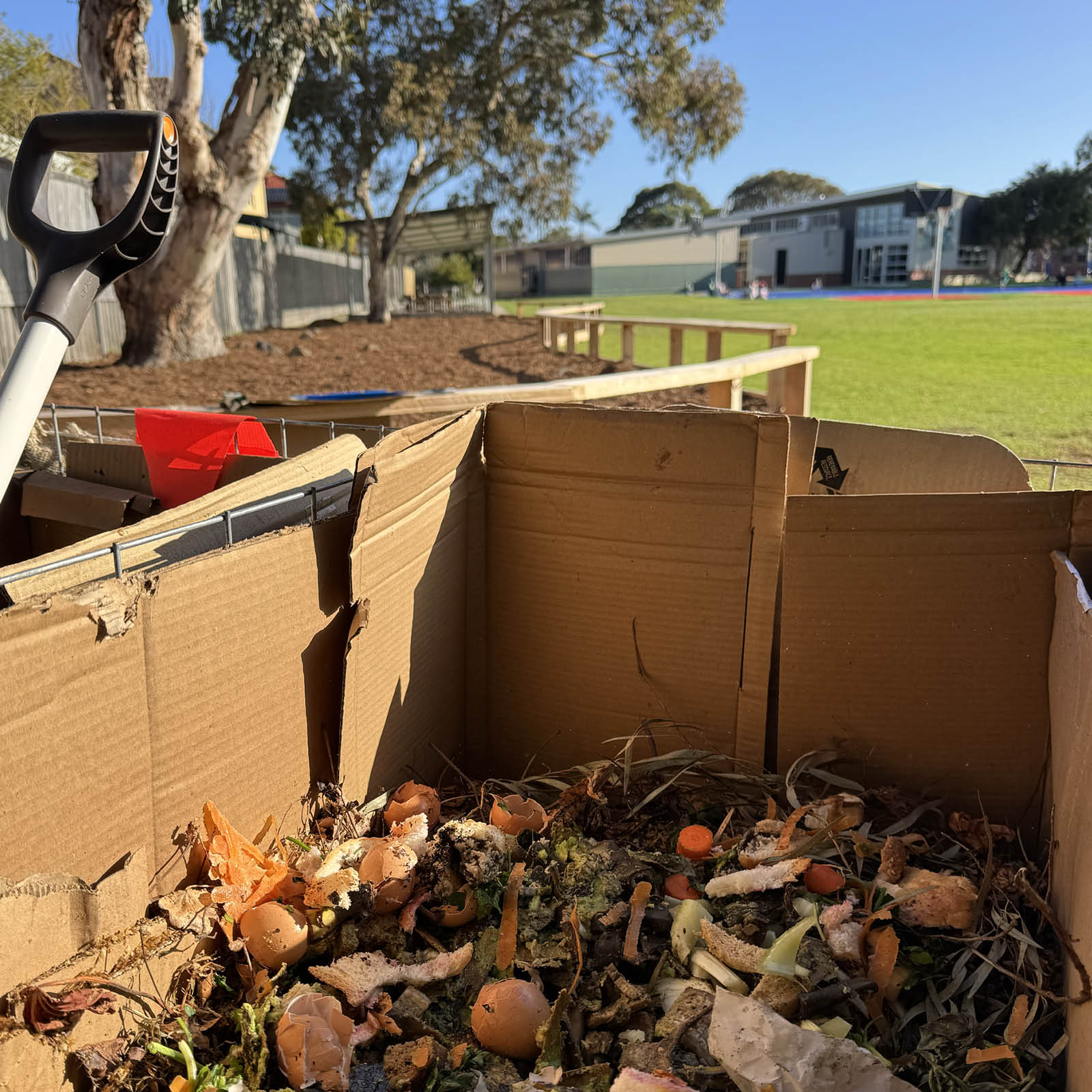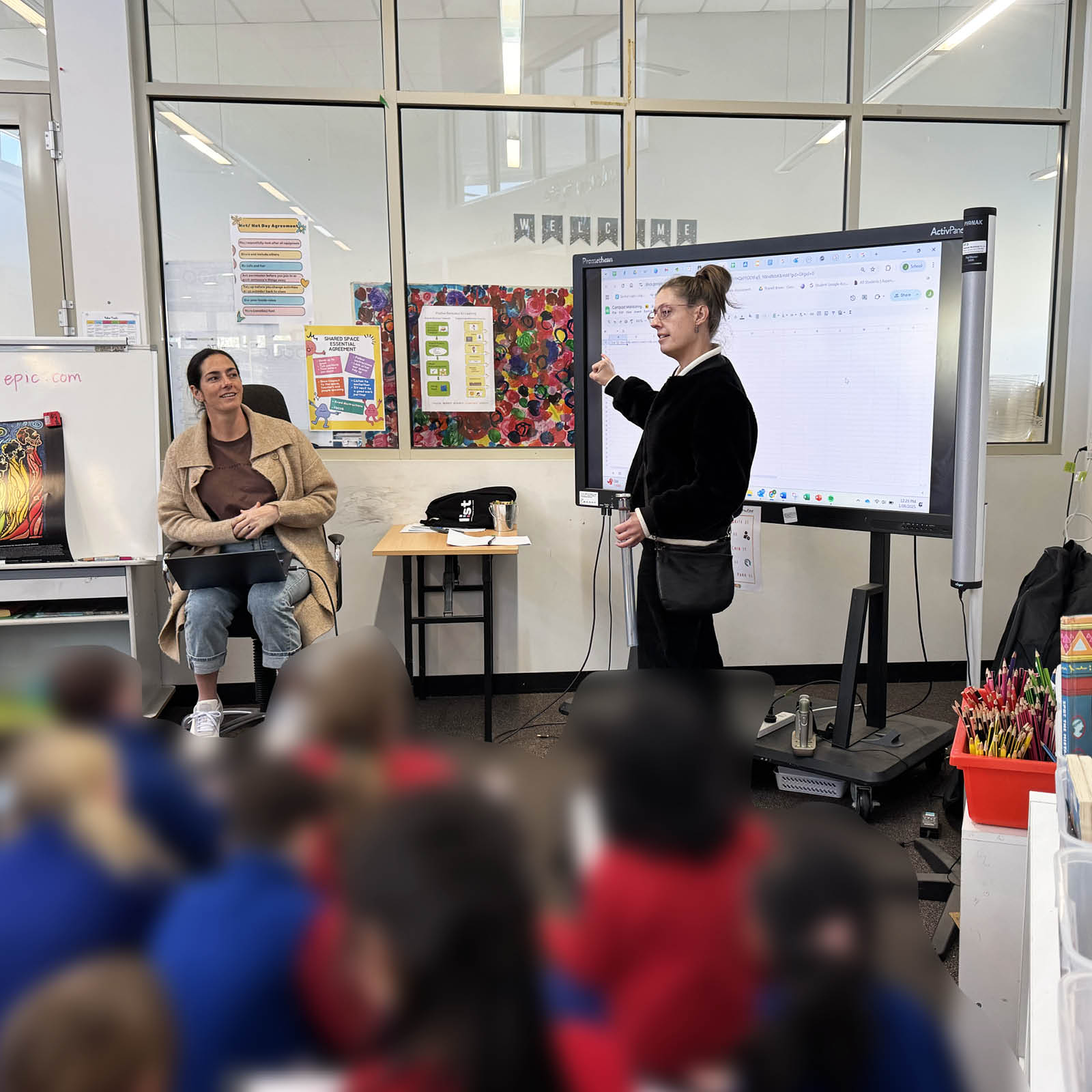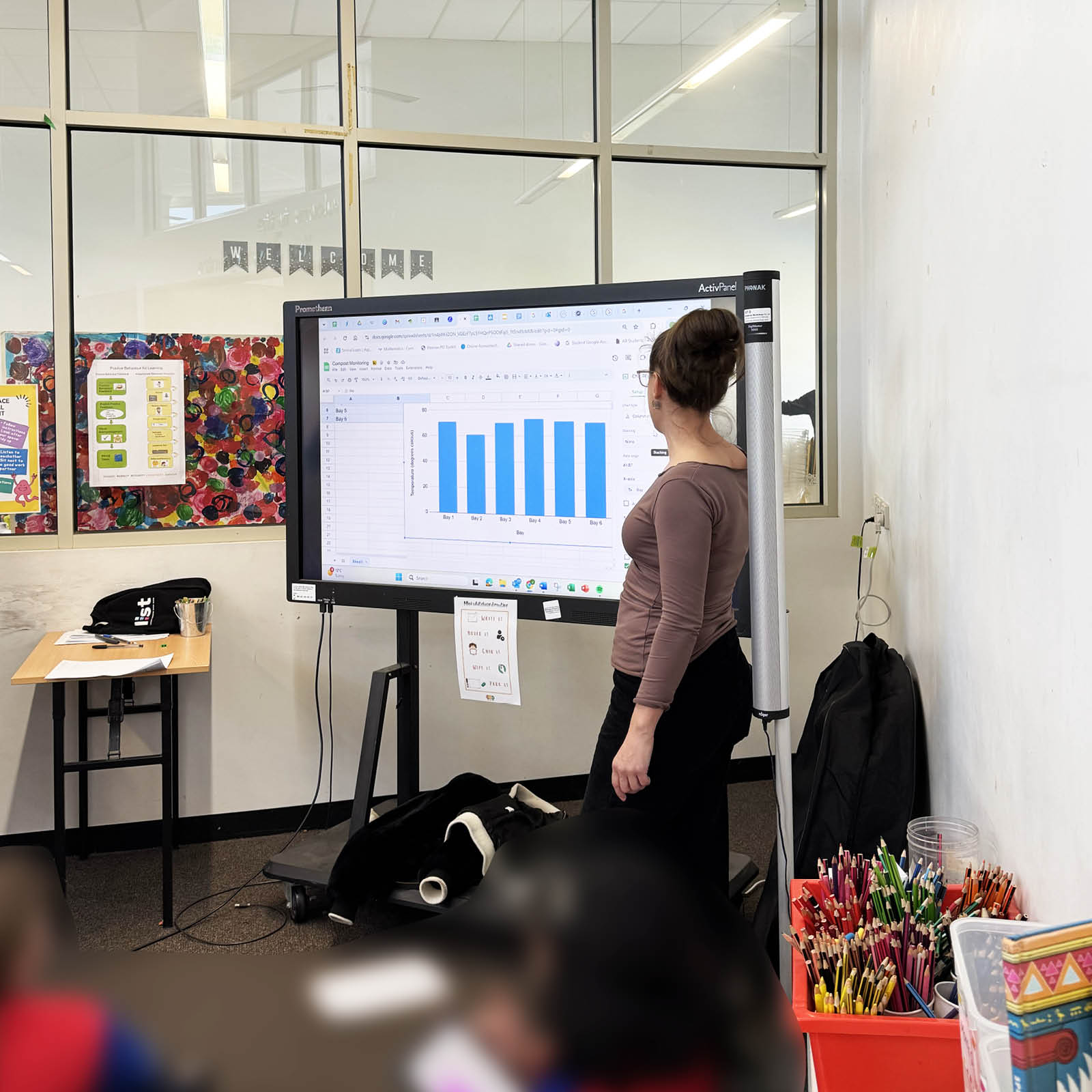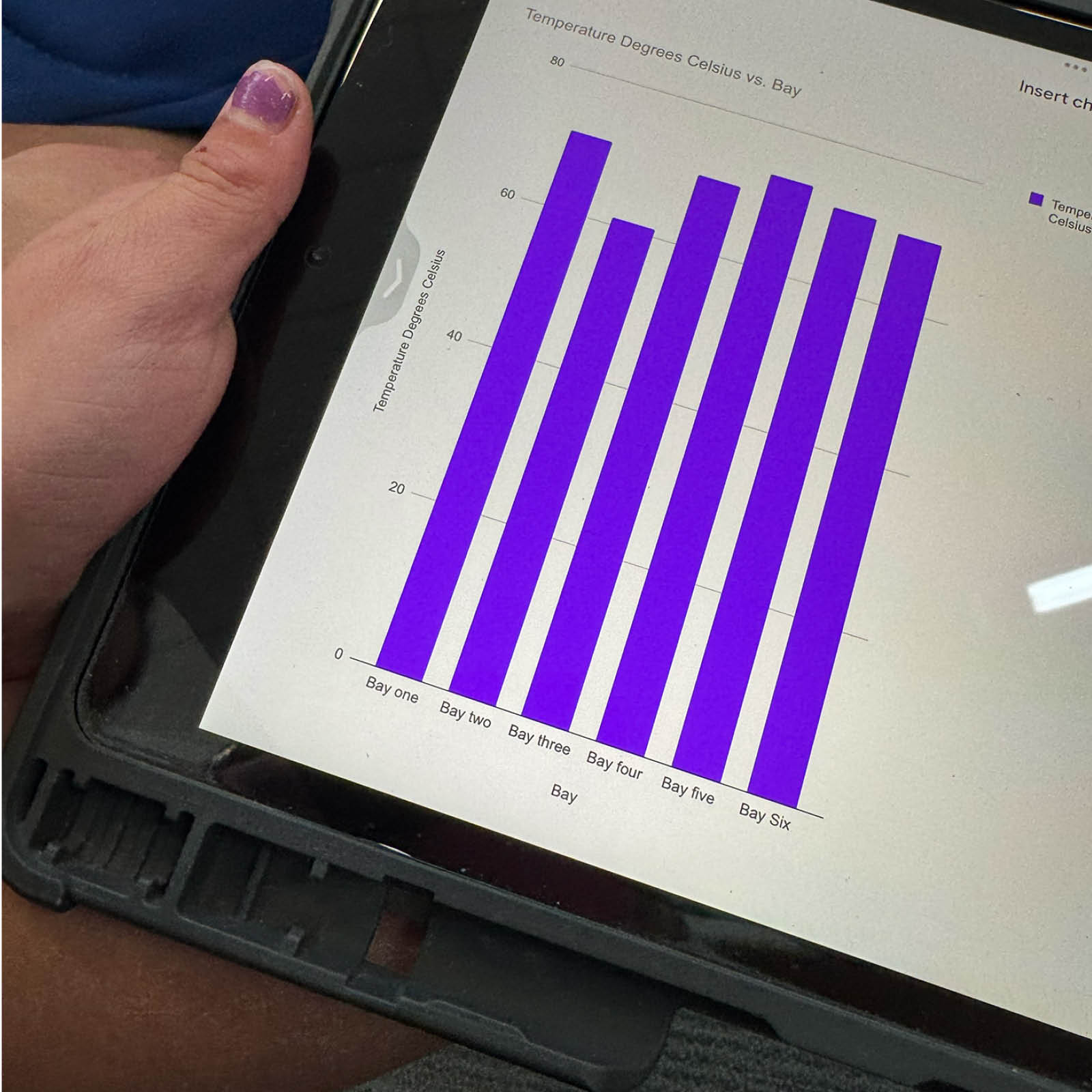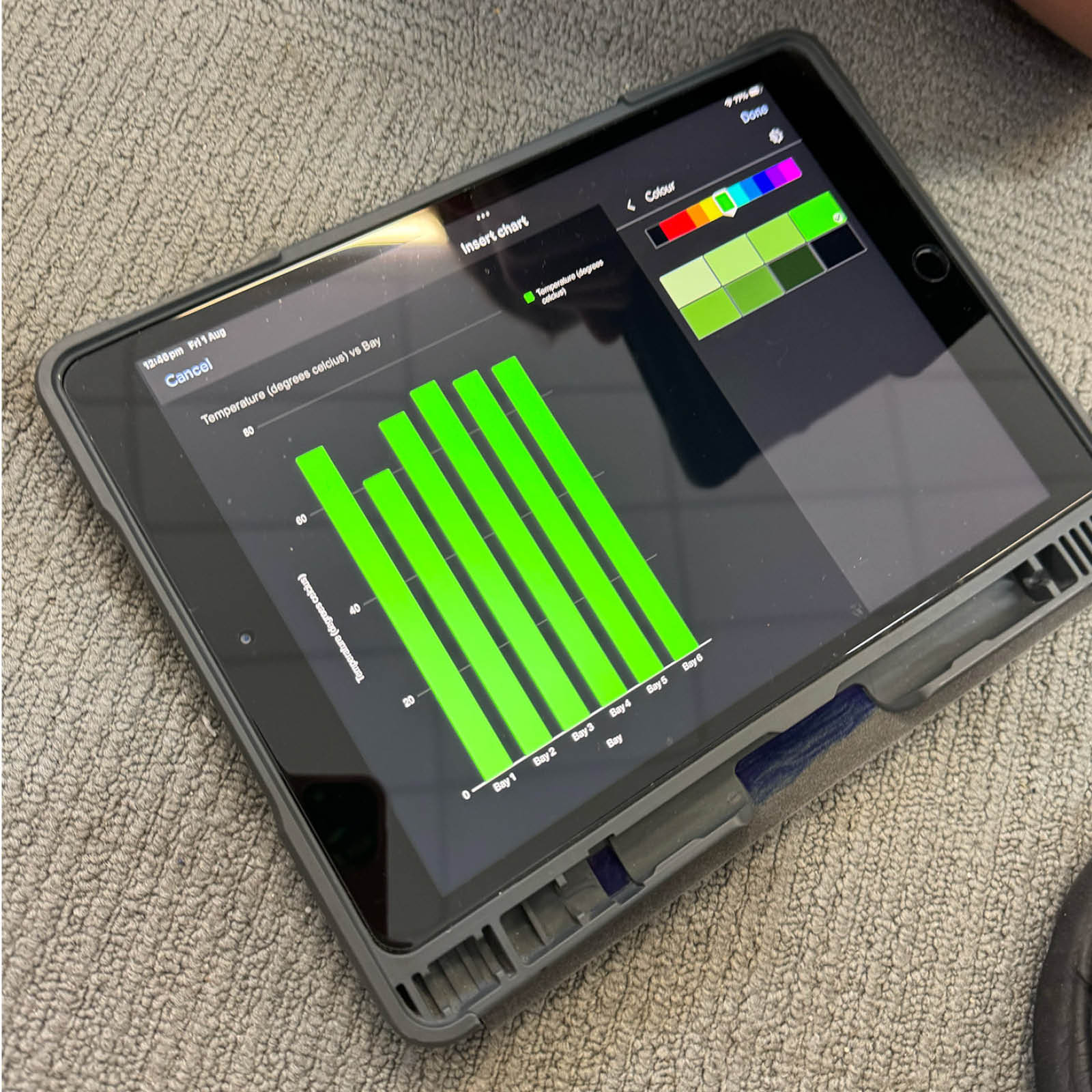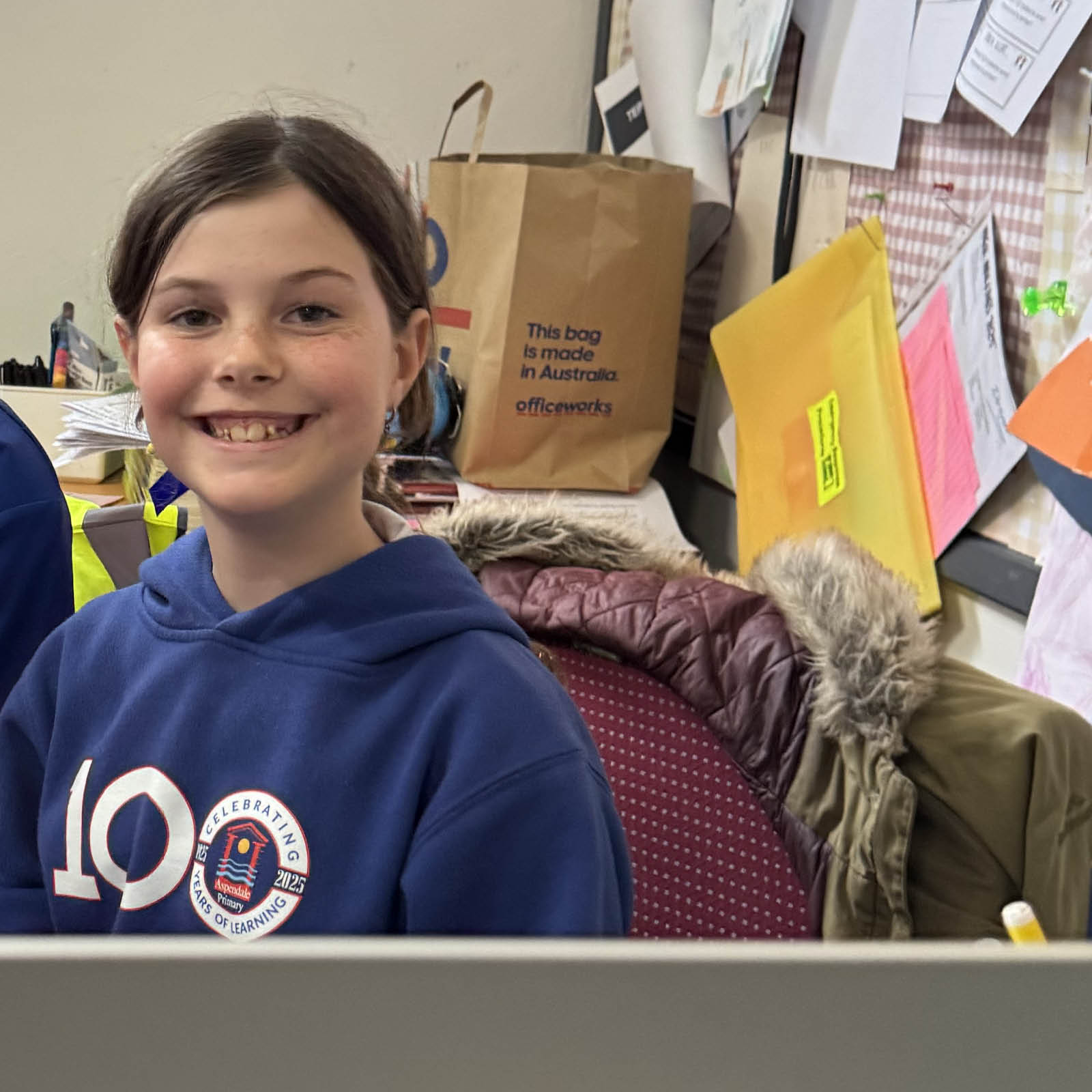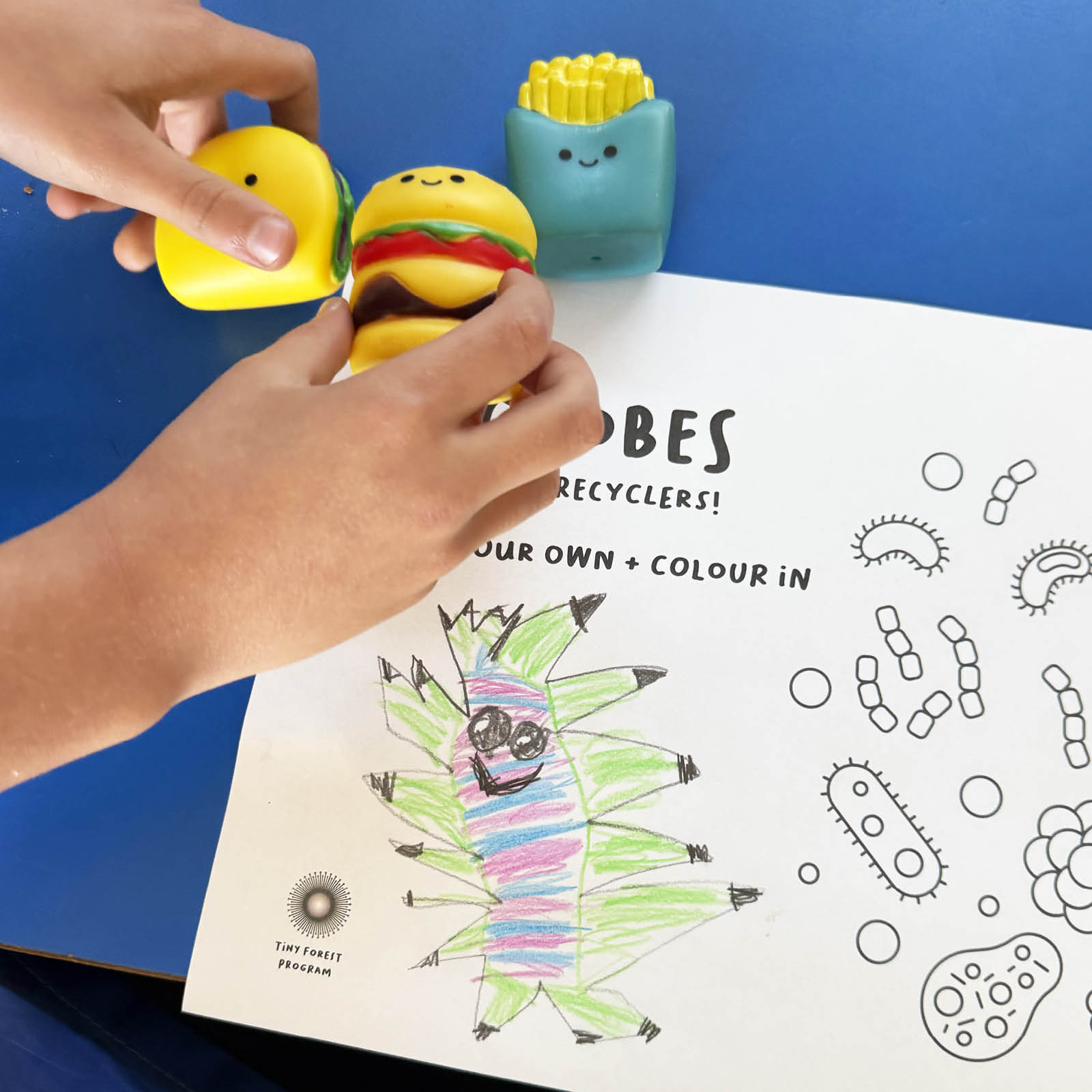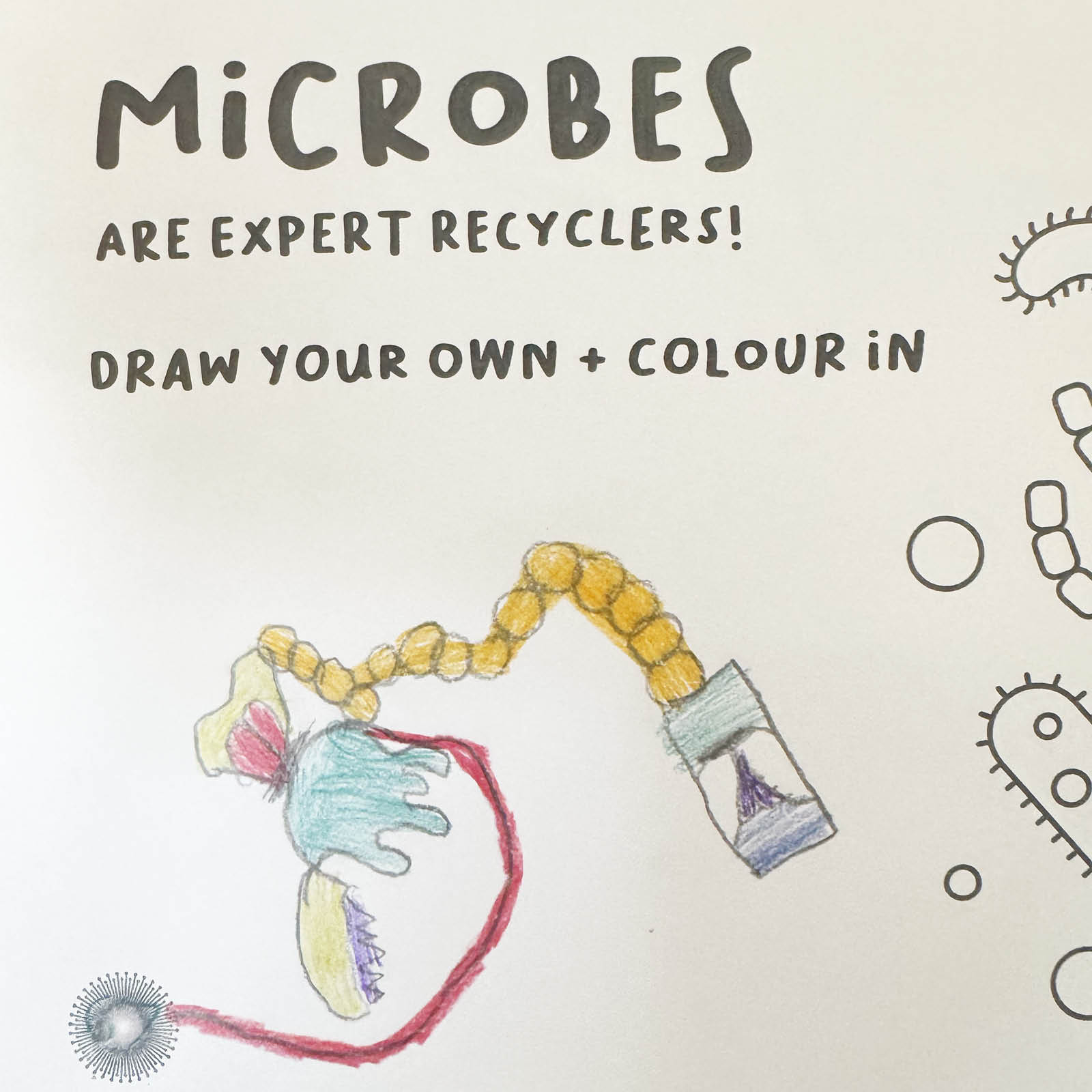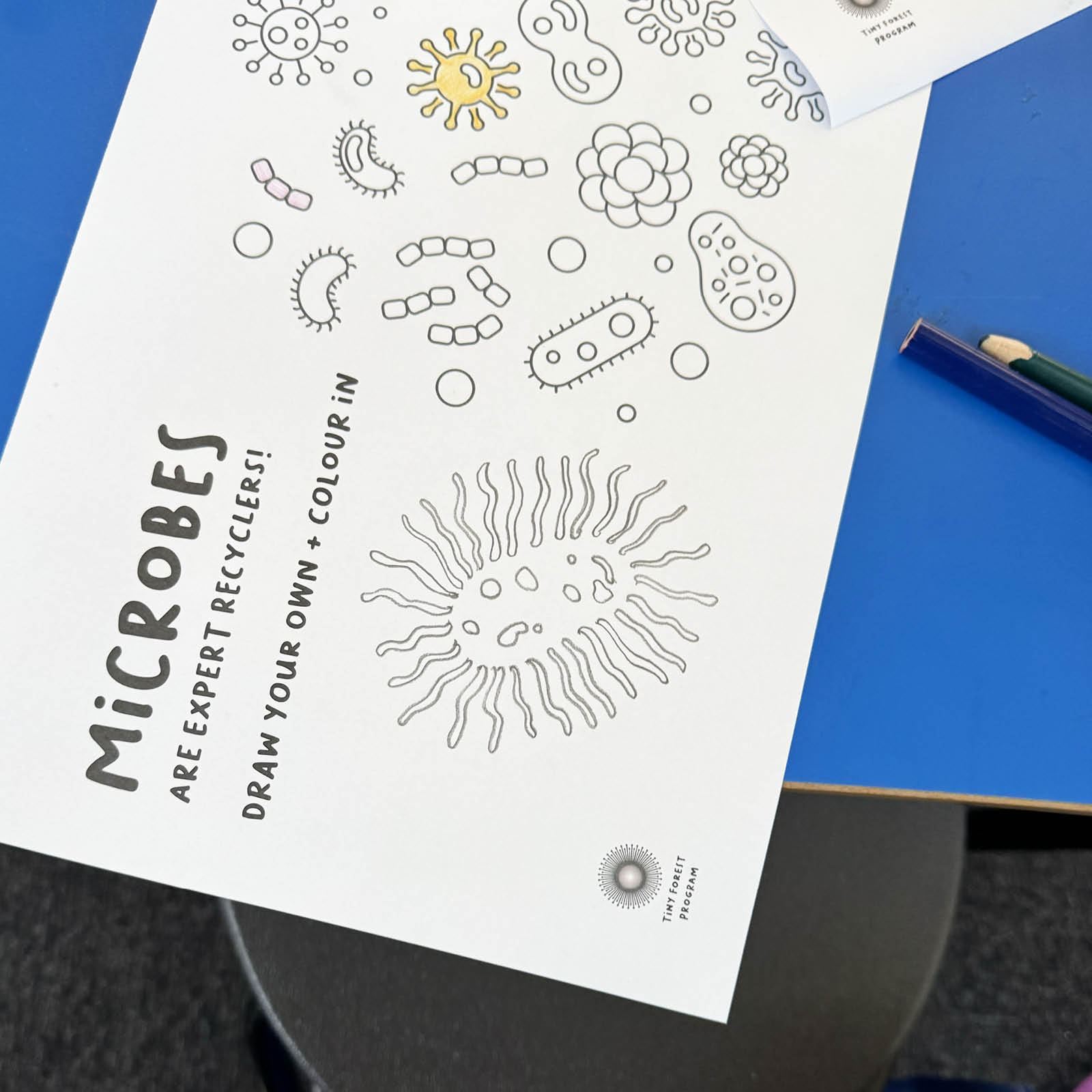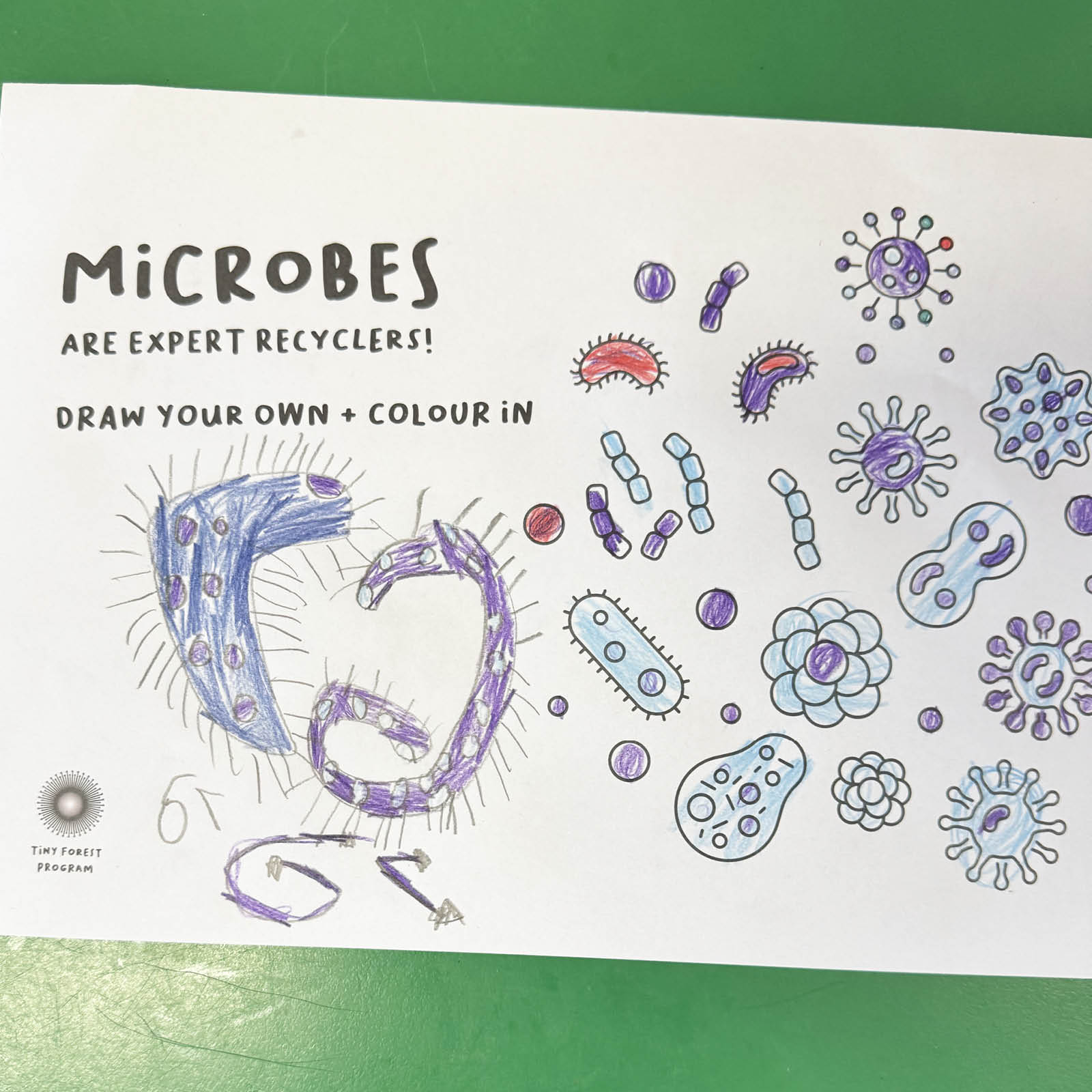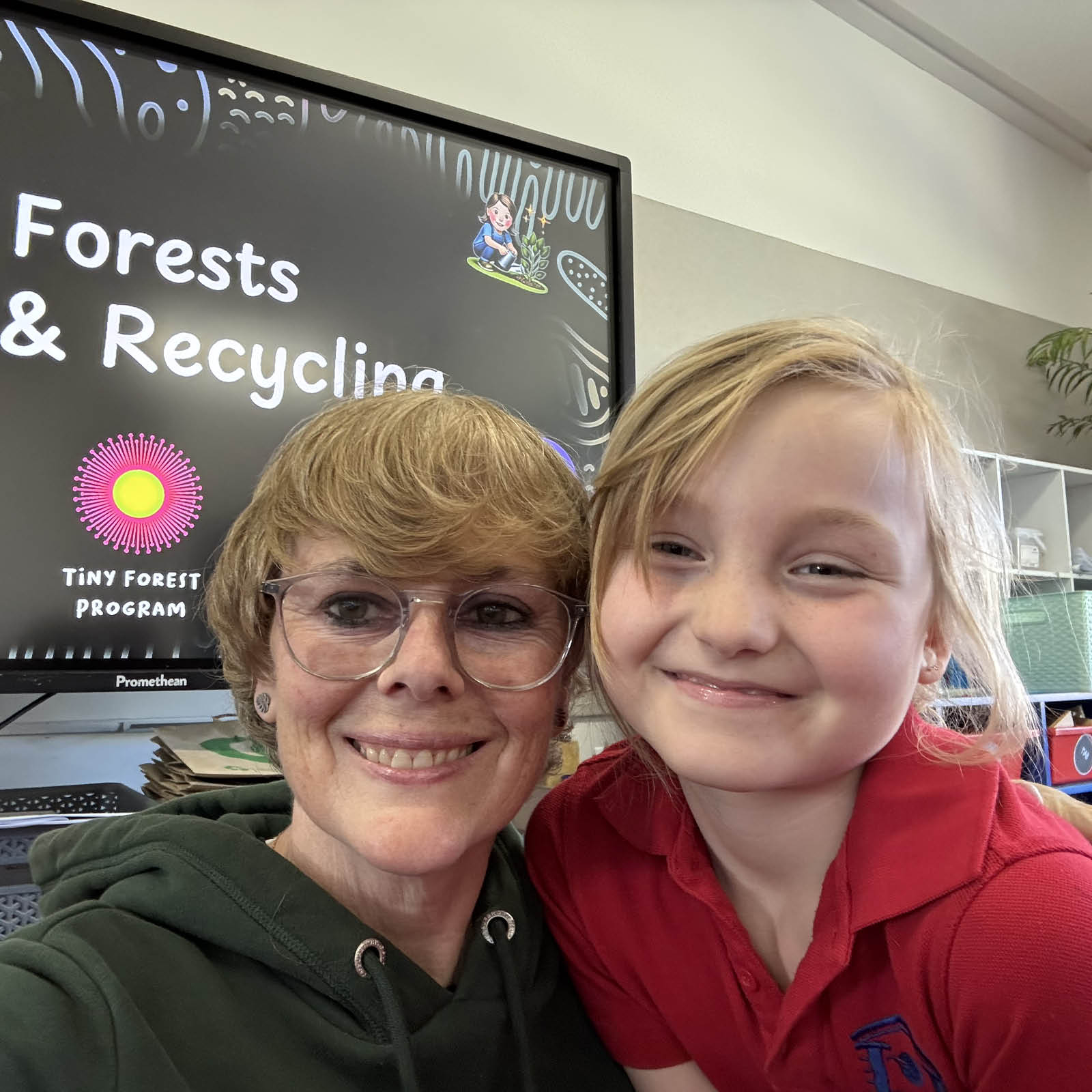In 2025 Aspendale Primary School will celebrate their 100 year anniversary. Here is the story…
A Tiny Forest and new Outdoor Classroom!
Stay tuned!
We will post regular updates here throughout 2025, and on the gardencrown instagram account
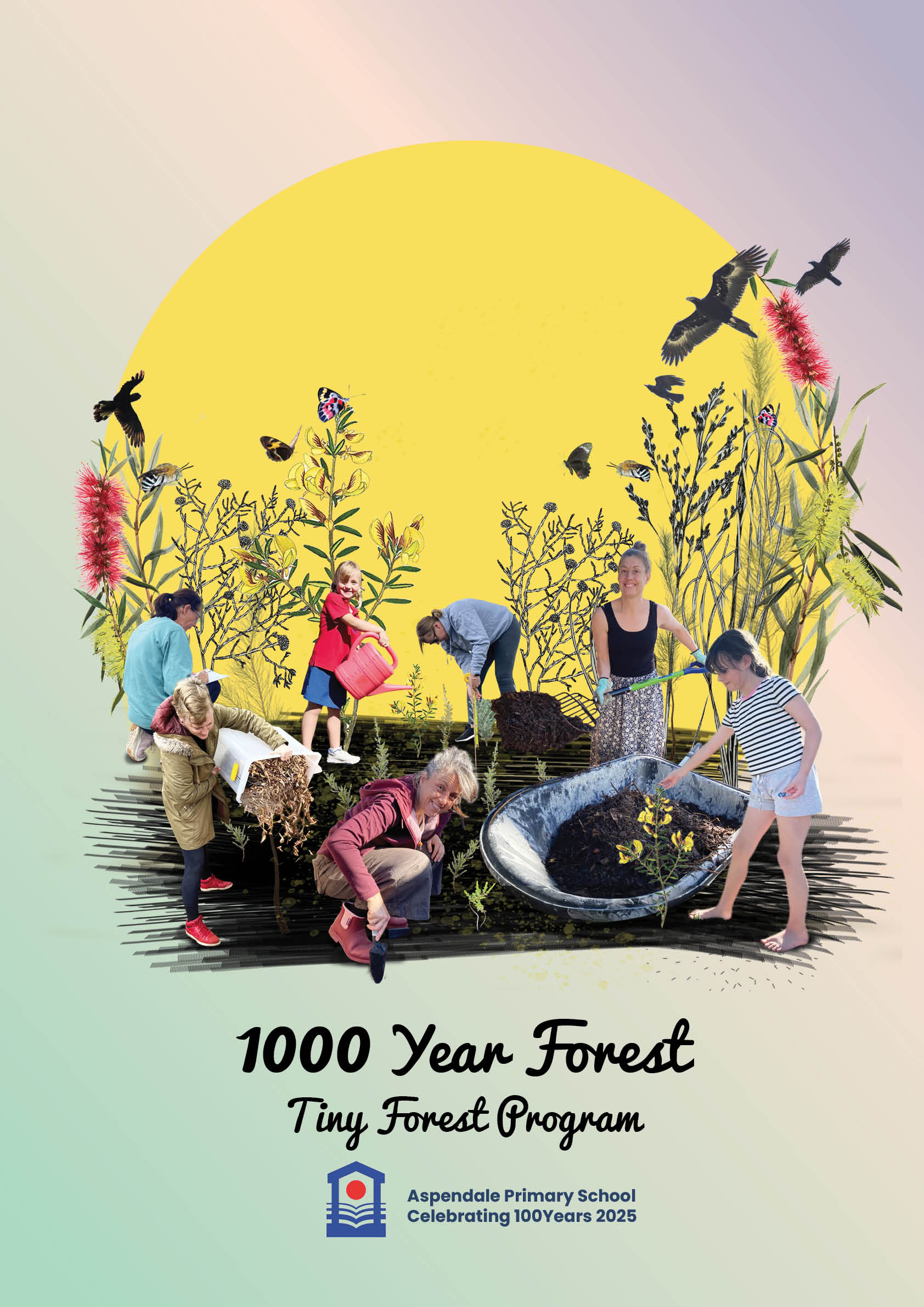
Before!
Photo of the site where the forest will be established.
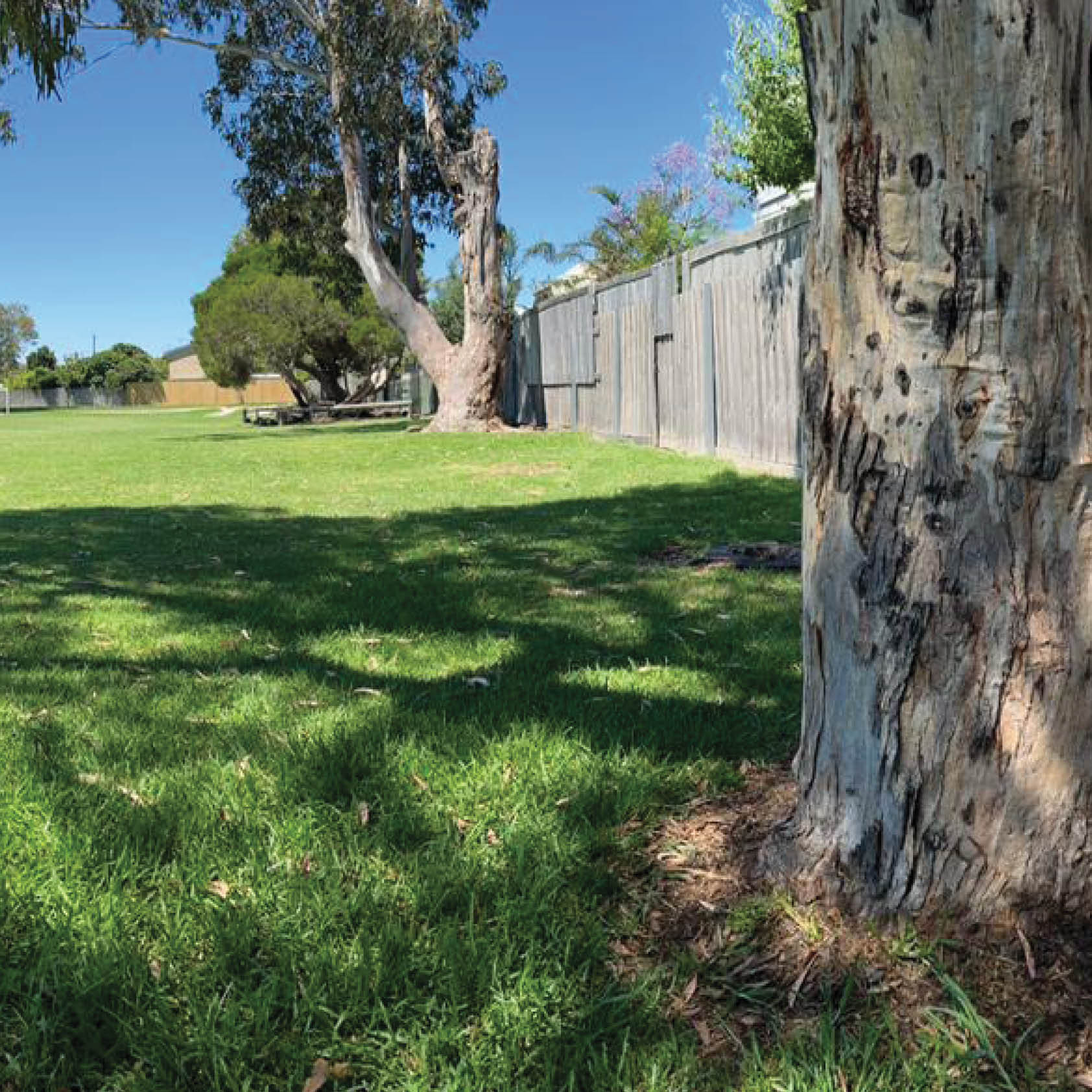
Site Preparation Stage 1
To prepare the site for planting the tiny forest, the existing non-native grass must first be removed. We are using a sheet composting method to smother the grass, which will also allow its remnants—blades and roots alike—to break down and enrich the soil with organic matter. For this, we’ve been collecting large sheets of recycled cardboard from IKEA. This cardboard is ideal due to its thickness and the absence of staples or coatings. Once the cardboard layer is in place, we will cover with a layer of mulch. This combination will create optimal conditions for decomposition, gradually transforming the layers into nutrient-rich soil, which will be enhanced with compost made on site.
Site Preparation Stage 2
The site has been covered with bush mulch. Made from chipped branches and leaf litter, it closely mimics the natural forest floor during the establishment phase, helping to retain soil moisture, regulate temperature, and suppress weed growth—creating ideal conditions for young plants to establish. As it breaks down, bush mulch and the cardboard layer underneath adds organic matter to the soil, improving structure and supporting beneficial microbial activity.
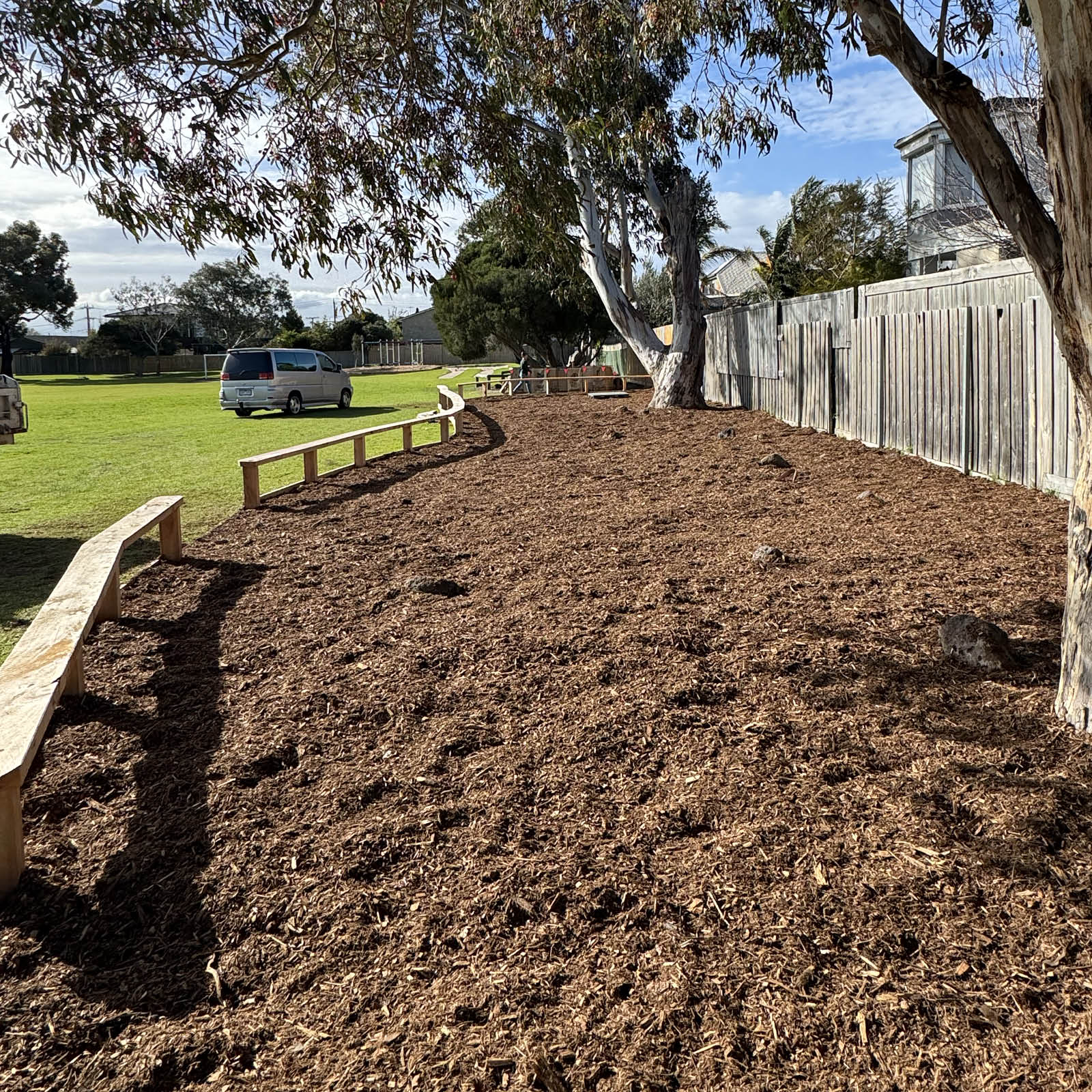
Composting
To give the seedlings the best possible start, compost will be added to the soil just before planting. This nutrient-rich amendment supports healthy plant development, helping the seedlings transition and thrive in their new environment. During the first year, compost tea may also be applied to provide additional moisture and nourishment.
We are using a hot composting method to ensure efficiency, producing ready-to-use compost within just a few weeks. This process relies on a precise balance of ingredients to reach and maintain a peak temperature of around 65°C—ideal for fostering the beneficial bacteria that break down organic matter. Careful planning and close attention ensure consistency and quality in every batch.
The compost ingredients include spent coffee grounds, coffee silverskin (a byproduct of the roasting process), garden clippings, dry leaves, cardboard, and food scraps. Each compost bay is checked daily: temperatures are recorded, and the materials are turned regularly to promote airflow and support the microbial activity needed for effective decomposition.
Live data feed of compost temperature monitoring
Scroll across to view the complete live data feed of compost temperature monitoring
Incursions
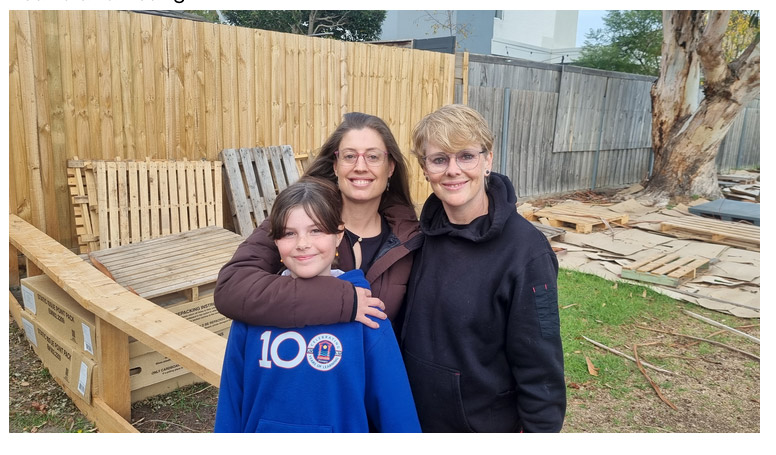
Early June
Students took part in a special session about building the 1000 Year Forest on the school grounds. Led by Olivia and Robyn, our forest team, the presentation explored three big ideas: forests, food webs, and the hidden world of microbes. The session included hands on activities and the opportunity to collect and prepare ingredients for the on site composting system.
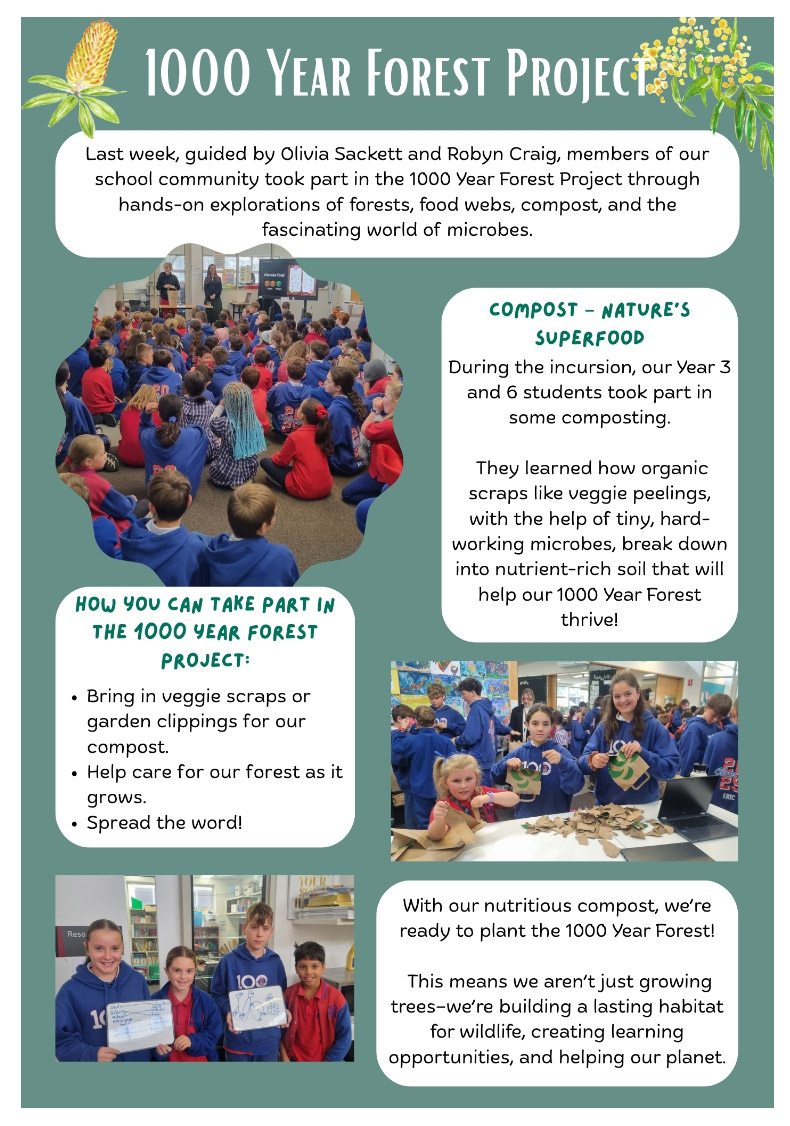
STEM Skill building
July
Students participated in a hands-on session exploring the power of data visualisation. Led by Olivia, they measured the temperature of each compost bay, entered the results into Google Sheets, and created graphs to visually represent their findings.
Incursions
October and November
Foundation, Years 1, & 2 – Forests, Soil & Recycling.
Prepared by Olivia, led by Robyn, and supported by Elke (Year 6) and Saksi (Year 2), these engaging incursions explored how compost is created and the vital role of microbes in breaking down organic matter. Building on the students’ current studies of recycling, the sessions linked the two topics through a hands-on group challenge. Students sorted various household waste items to discover what can—and cannot—be composted, deepening their understanding of sustainability and waste reduction. A microbe-themed drawing and colouring activity inspired students’ creativity and imagination, helping them visualise the unseen world of microorganisms.
The benefits of planting a Tiny Forest
- Connecting the school community with indigenous habitats, fostering a caretaker approach to local environment
- Providing STEM learning and growth opportunities for local women and children
- Giving children and teachers more time out in nature
- Providing a learning environment which fosters inclusivity, and an opportunity to learn in a non traditional classroom setting
- Enhancing the existing space, by providing shade and shelter, which can cool the local area by at least 10 degrees
- Encouraging local wildlife to visit the site, as the habitat grows to support their needs
- An empowering positive action to help mitigate climate change, and the disappearing local tree canopy cover
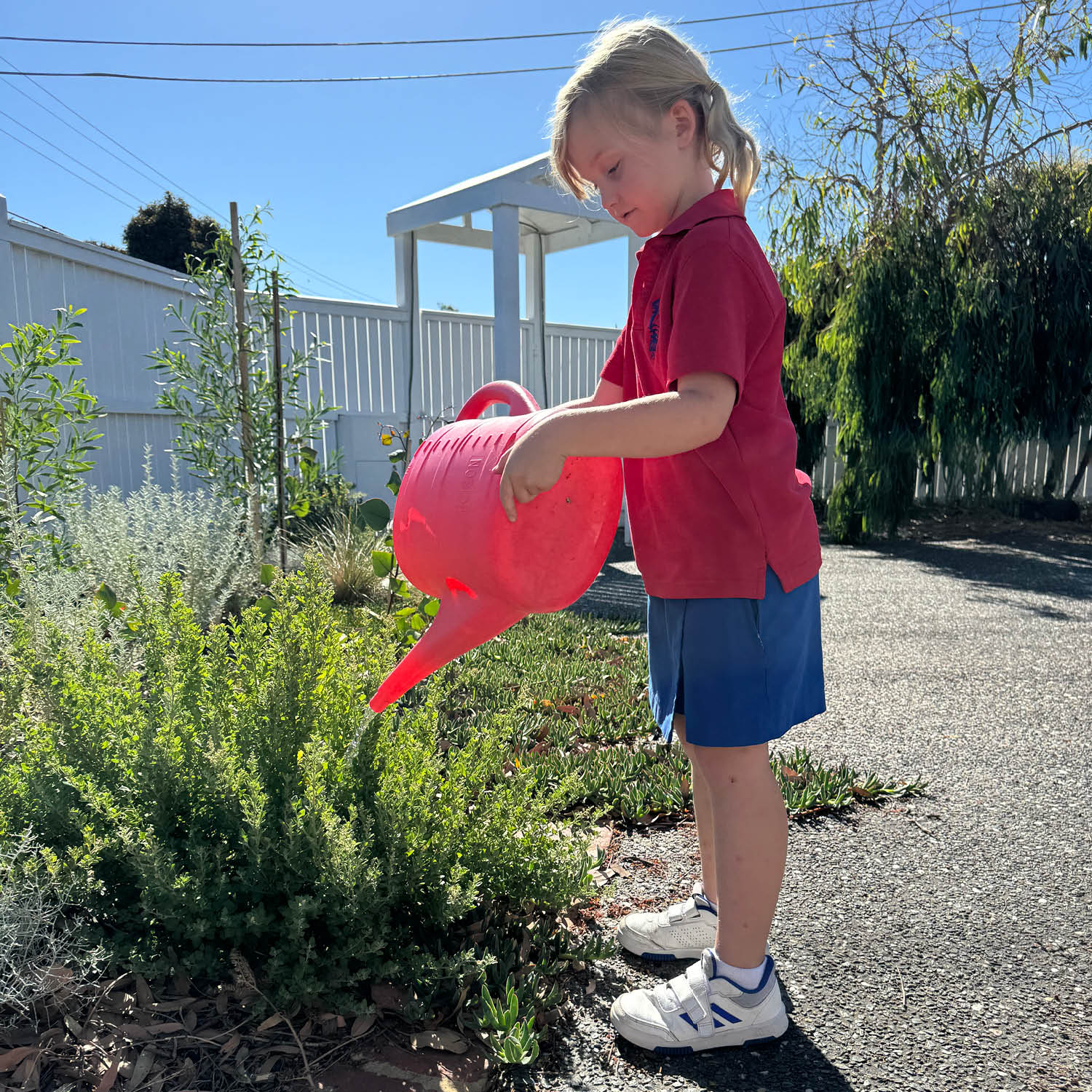
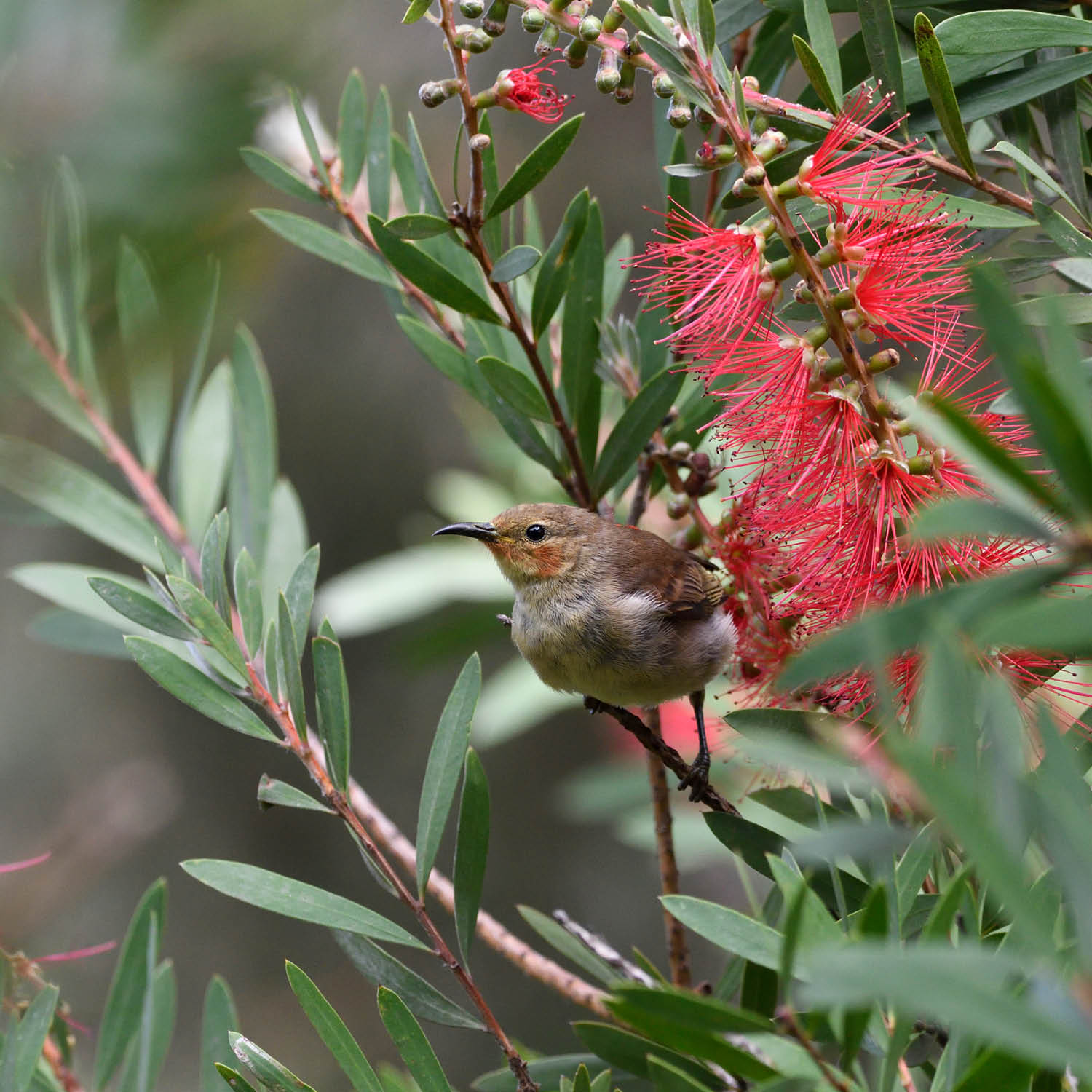
Restoring local ecosystems, increasing biodiversity, attracting native animals
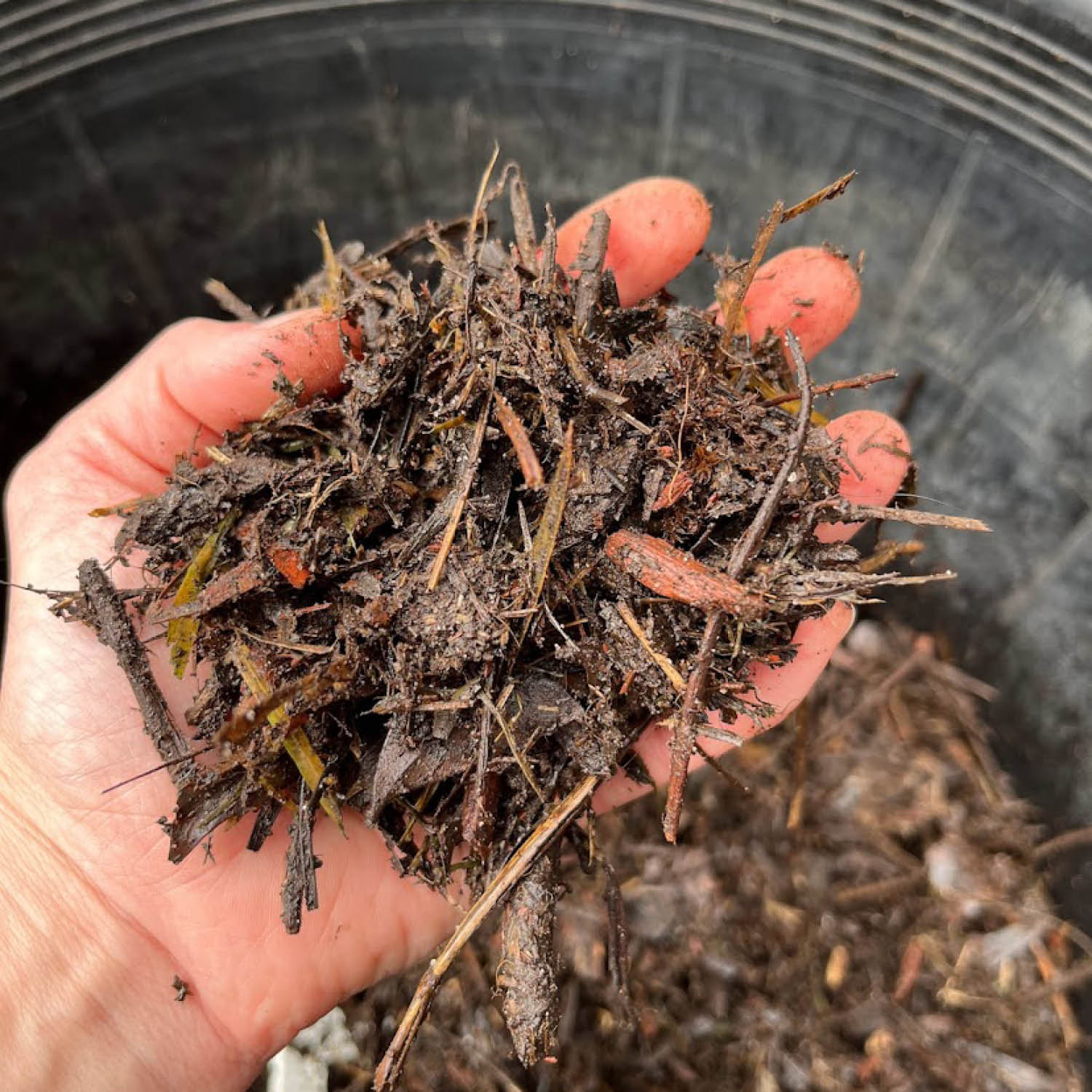
Tiny Forests offer a fast-track to achieving decarbonization, mitigating climate change and improving air quality
